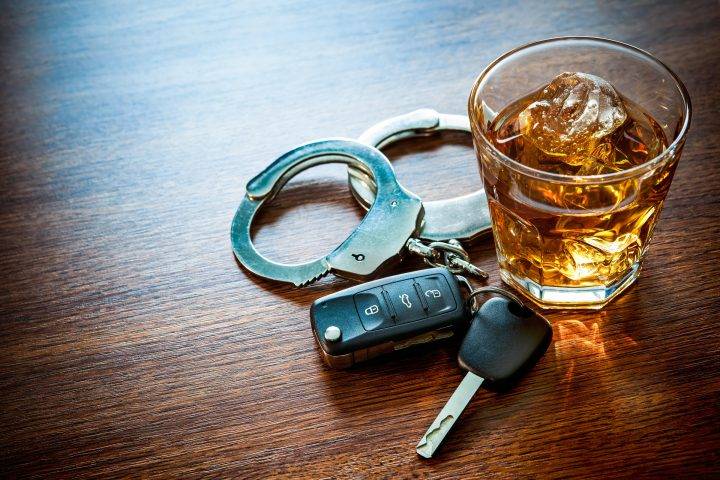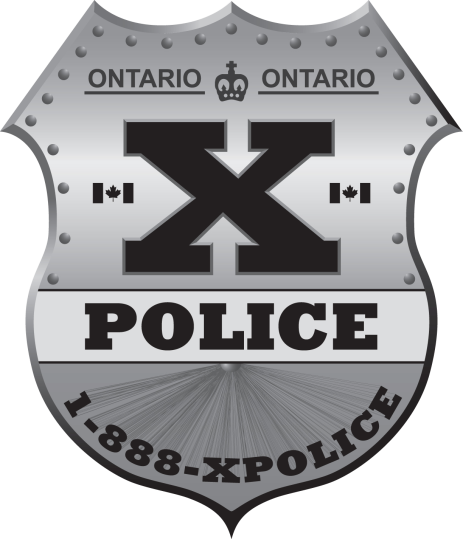
Soon police will be using oral devices to screen for drug use among drivers and adding canoeists, kayakers and paddleboarders to the list of “vehicle” operators who must stay sober.
Sgt. Tim Burtt, with the traffic management unit of Greater Sudbury Police, said Monday the police service is acquiring six Drager 5000 units — which can detect THC (the psychoactive ingredient in marijuana) and cocaine through a saliva swab — to its fleet of vehicles.
The machines, about the size of Keurig coffeemaker, have already been obtained but “they won’t be deployed until we have officers trained on them,” he said. “We’re sending one officer down to be trained shortly as a trainer, and then he will train select officers in the traffic unit.”
The tool will not be used to lay criminal impaired charges, he said, but can be effective in enforcing other laws.
“It is not a device that will be used in regard to forming grounds for an impaired,” he said. “It’s meant for provincial sanctions, so commercial motor vehicles, graduated licensing and young drivers, who all have to have zero drugs or alcohol when operating vehicles.”
Meanwhile, police are obliged to take extra types of watercraft into consideration when conducting patrols of lakes and rivers, after a judge ruled in November that canoes are “vessels” under the Criminal Code of Canada.
The case concerned the death of a young boy in Muskoka whose paddling companion — his mother’s boyfriend — was impaired when their canoe capsized.
The ruling means kayaks and even paddleboards are also considered vessels, said Burtt. And even though these types of self-propelled watercraft don’t move especially fast, people need to be aware that drunken operation is against the law.
“It’s controversial and I know there will be appeals, but this is something we have to educate the public about,” he said.
Golfers must also be careful not to imbibe (or inhale) too much while conveying their clubs from one hole to the next.
“A lot of complaints we get with golf carts is we actually have people who are silly enough to keep driving them even afterwards,” Burtt said. “Driving down the street — people do it, believe or not. We get those calls every year.”
Of course the most dangerous and deadly types of impaired driving involve bigger vehicles travelling at higher speeds on busy roads and waterways.
Last year saw four fatal collisions attributed to drugs and/or alcohol in Greater Sudbury, said Burtt, and they represent “a cross-section of what we typically see here.”
The vehicles involved in the deaths were a personal watercraft, a car, a motorcycle and a snowmobile.
The latter was crashed by a young woman on Panache Lake last March, and subsequent toxicology results showed both alcohol and drugs were present, said Burtt.
So far this year isn’t looking much better when it comes to impairment-related tragedies.
“We’re now two-and-a-half months into the year, and we’ve had four traffic fatalities in the City of Greater Sudbury,” Burtt said. “Two of those have either drugs or alcohol involved — one had drugs, the other alcohol — so that’s 50 per cent.”
This stat is in keeping with national data showing 46 per cent of fatal collisions can be attributed to alcohol and/or drug impairment, the sergeant noted.
Police were again busy carrying out RIDE checks over December this past year, but sadly many drivers still don’t seem to be getting the message.
“We compared the statistics from 2017 to 2018, and looked at two key points — one being the roadside suspensions, and the other being roadside screeners administered,” Burtt said. “The roadside suspensions went up five times, and the roadside screeners doubled. So that causes a lot of concern.”
Impaired driving charges remained static — seven in both 2018 and 2017 — but that can only offer so much comfort, according to the traffic sergeant.
“We may not have seen the impaired charges going up, but we are definitely finding people drinking and driving, and seeing that go up,” he said. “And overall for the year 2018, it went up significantly.”
Burtt said research shows one out of 13 drivers leaving a local bar from 11 p.m. to 4 a.m. will do so impaired. If you consider a small pub holds about 150 patrons, that means “11 drivers are leaving impaired,” he said. “For large clubs or establishments, with 600 patrons, you’re looking at 46 drivers leaving impaired.”
While booze is still a big problem, drug-impairment has also become a growing concern, in part because of pot legalization.
Burtt said Greater Sudbury Police now count three drug recognition experts, with two more presently undergoing training.
Ideally, the police service would have twice as many DREs, he said, but it requires time and money for officers to do the training, which takes place in the southern U.S.
A lot of Sudburians, in the meantime, haven’t quite figured out the rules around marijuana transport. Burtt pointed to a recent incident where a young man stopped at a RIDE check had “two baggies between his feet, and more under the seat.”
According to the law, pot has to be in its original, unopened packaging or packed in a sealed container, and not readily available to the driver or even a passenger. As well, you are only permitted to pack along 30 grams of marijuana.
This particular driver wasn’t stoned, fortunately, but was fined about $400 for having too much pot within easy reach. He also had a cellphone in his lap, and was fined another $600 for that.
While controversial among the public, police have welcomed a new law that enables them to conduct a breathalyzer test even if a motorist shows no glaring sign of alcohol impairment.
Mandatory alcohol screening came into effect in December, and has proven quite useful, according to Burtt.
“During RIDE spot checks, it’s an amazing tool,” he said. “When you have a car full of people and you can smell alcohol all around, you can make the demand of designated drivers — and it’s amazing how many of our designated drivers have alcohol in their system.”
Police are using discretion, however, and have not overused this option, he stressed.
“Between December and February, we had 13 mandatory alcohol screening requests,” he said. “That’s not a lot. It’s increased since then, because we’ve been using it at the RIDE spot checks, but officers are not abusing this. They are using it properly for investigative needs, which is good to see.”
Source: The Sudbury Star
